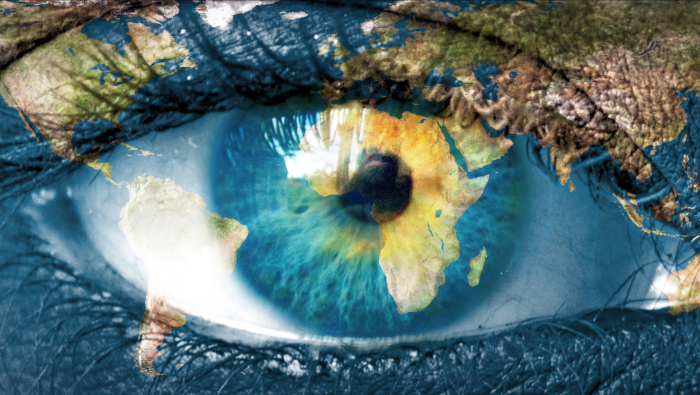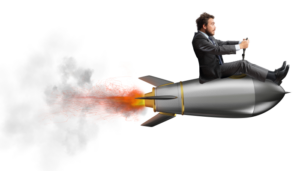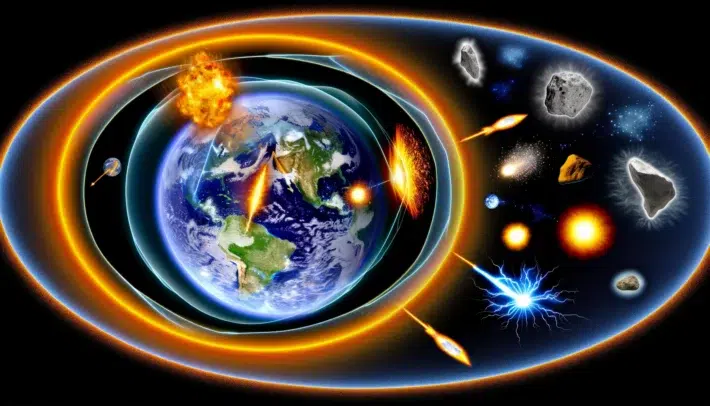
Biggest Threats to Burst Our Planets Bubble
In the vast expanse of the final frontier, where no one has gone before, some phenomena defy imagination, and some defy our atmosphere itself. Journey with us as we explore the realm of empirical science and boldly venture into the theoretical unknown. Grab your tricorders, engage your warp drives, spark a bowl and let’s examine the vast science-fiction-meets-reality things that blow holes in our atmosphere—and a few that might just blow your mind.
What happens if there's a hole in the atmosphere?
Though often taken for granted, the Earth’s atmosphere is an invaluable protective shield that sustains life on our planet. It’s made up of a few different layers that all protect the Earth and make it sustainable for life. It provides the oxygen we breathe, regulates temperatures, and shields us from the harsh radiation of space.
If a breach were to occur in the Earth’s atmosphere, the consequences would be dire. Such a breach could result from all sorts of cataclysmic events, like a colossal meteorite impact, irreversible climate change, a catastrophic volcanic eruption, or even a futuristic technological mishap. Possibly even today as humans continue to push the envelope far past their native size.
The most immediate and devastating effect would be the rapid depletion of breathable oxygen. Without this essential element, life as we know it would become unsustainable, leading to mass suffocation and the extinction of most life on Earth. The absence of the atmosphere’s insulating properties would also result in extreme temperature fluctuations, causing days to scorch under the unfiltered blaze of the Sun while nights plunge into bone-chilling cold.
With the atmosphere gone, the planet would be exposed to the full force of cosmic radiation, including harmful ultraviolet (UV) and X-rays. This radiation would inflict severe damage on exposed surfaces and living organisms. The relentless bombardment of high-energy particles from space, combined with the absence of the atmosphere’s protective buffer, would even lead to rapid erosion of Earth’s surface features— leaving our beautiful blue planet a barren wasteland.
The Ozone Hole
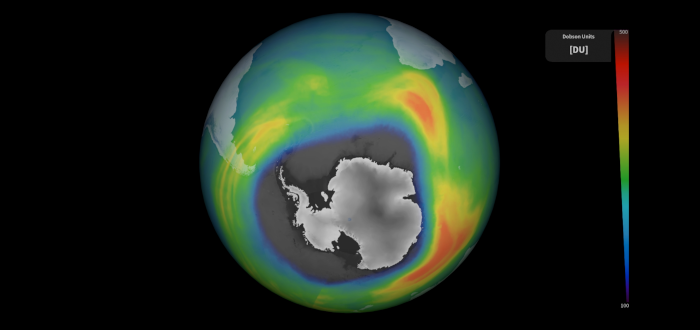
Unfortunately, we already have at least one hole in our atmosphere.
The story began in the late 1970s when scientists peered through their telescopes and atmospheric sensors, hoping to observe distant star clusters and planets. What they found wasn’t a celestial body but rather an ominous deficiency—a gaping hole in the ozone layer.
Picture it: a hole, not in the fabric of space-time, but in our own planetary defense shield, the ozone layer. Discovered over Antarctica, this hole was no cosmic wormhole, instead a sinister breach in the layer of ozone molecules high above our heads.
Human-made chlorofluorocarbons (CFCs), commonly used in aerosol sprays and refrigerants, infiltrated our atmosphere. When released, they soared upward, eventually reaching the ozone layer, where they ripped apart ozone molecules— leaving behind a massive hole in the atmosphere. At its peak in 2006, the hole was consistently averaging over 27 million square kilometers (10.6 million square miles) wide. That’s a hole in our atmosphere the size of North America.
As you can imagine, it was an incredible threat to the environment. More than a threat— a man made catastrophe. Without the ozone layer’s protection, harmful ultraviolet (UV) rays from the Sun would have pierced through, subjecting Earth to a relentless cosmic radiation barrage.
In a sci-fi scenario that would make even the most seasoned Star Trek crew shudder, the unchecked growth of the Ozone Hole could have led to a world scorched by deadly UV rays. Skin cancer rates would have skyrocketed, ecosystems would have faltered, and the fabric of our existence might have unraveled.
However, an international effort sprang into action. The Montreal Protocol of 1987 emerged as our trusty photon torpedo—a global treaty that aimed to phase out the production of CFCs and other ozone-depleting substances. Inspired by the spirit of cooperation, scientists and leaders from across the planet devised ingenious alternatives to these ozone-depleting compounds.
Gradually, we began to see signs of progress. Over the past two decades, the hole has gotten smaller and smaller and now averages about 8.9 million square miles (23.2 million square kilometers.)
While the hole is still larger than Russia, our actions to protect our planet over the last several decades give us a promising glance into the future. The Ozone Hole remains a symbol of both scientific triumph through worldwide unity, and a stern warning about the consequences of tampering with our atmosphere.
What Else Threatens Our Atmosphere?
While the Ozone layer is healing slowly, there are still a lot of other threats to our atmosphere. Everything from the vast climate out in space to our planet’s natural features and the choices we make can all blow holes into our atmosphere. In the following sections, we’re breaking down some of the biggest risks to our atmosphere from Earth to Outer Space. From there, we’ll break down a few of the speculative threats we may face as we chart our course through the cosmos.
Nuclear Explosions
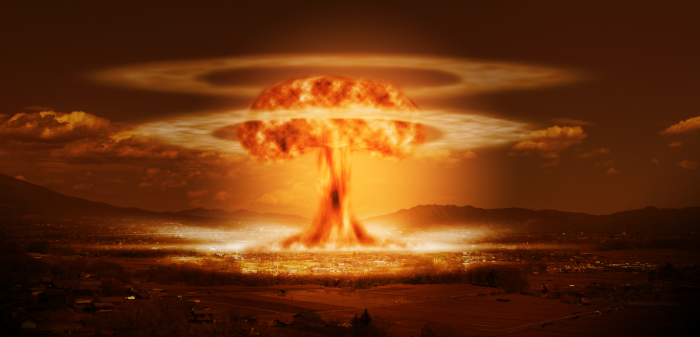
We’ve all heard of the threat of a nuclear winter. We’ve seen it before in places like Chernobyl, which now stands as a ghost town frozen in time. While the Chernobyl incident was smaller in the grand scheme of things, the chemical reactions that took place instantaneously during the catastrophic event choked the atmosphere, the land, and the water, filling it with radioactive debris and soot.
When a nuclear explosion ignites, it unleashes an explosive chain reaction. The fireball that engulfs the detonation site reaches temperatures hotter than the heart of the Sun. This fiery inferno releases unimaginable amounts of energy and a torrent of dust, ash, and soot.
In the 1980s, scientists discovered that the infernos of nuclear warfare would inject enough soot and smoke into the atmosphere to block out sunlight, rendering Earth a frigid, desolate wasteland. It would result in widespread crop failures, famine, and a struggle for survival that could rival any dystopian sci-fi thriller.
However the devastation doesn’t stop there. A global nuclear war would unleash chemical reactions that devour our protective ozone layer. The explosions would generate nitrogen oxides that spell doom for the ozone molecules above.
The smoke alone from a nuclear catastrophe would make the ozone hole larger. Heating the stratosphere, altering chemical reaction rates, and diminishing photochemistry—the very essence of life-giving sunlight—would destroy the ozone layer. In short, the atmosphere wouldn’t just have a hole in it— it would cease to exist. So would grandparents, moms, dads & children. If we missed naming anyone, it wouldn’t matter regardless.
Combining advanced models that rival the starship computers of science fiction, the scientists have calculated the combined effects of nitrogen oxides, stratospheric heating, and reduced photochemistry on the fate of our stratospheric ozone and the surface’s exposure to deadly cosmic UV radiation.
Now, as the world stands at the precipice of geopolitical tensions reminiscent of Cold War sci-fi sagas, we’re all asking the same question: could nuclear winter happen on a global scale? While history has shown us glimpses of its potential on a small scale, the answer remains uncertain.
List of Countries with The Most Nuclear Weapons.

Russia — 6,257 (1,458 active, 3039 available, 1,760 retired)
United States — 5,550 (1,389 active, 2,361 available, 1,800 retired)
China — 350 available (actively expanding nuclear arsenal)
France — 290 available
United Kingdom — 225 available
Pakistan — 165 available
India — 156 available
North Korea — 40-50 available (estimated)
Israel — Unknown
Let this be a cautionary tale—a reminder that the boundary between science fiction and reality can blur in the face of human folly. Nuclear war is the last thing we want for the planet, and the majority of humanity understands that.
Volcanoes
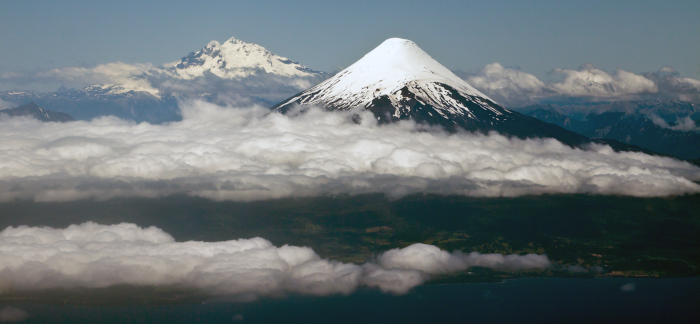
Volcanic eruptions are a spectacular, fiery display that can mesmerize and terrify in equal measure. Yet, beyond their awe-inspiring vibes, these terrestrial pyrotechnics could also blow a hole in our atmosphere.
Volcanoes are nature’s forges, where molten rock, known as magma, surges from the depths of our planet when gaseous pressure builds against high levels of magma and increases pressure on the top of the volcano. As this molten rock approaches the surface, it blows the top off of the volcano and releases debris and gasses into the atmosphere.
Mount St. Helens stands as a poignant reminder of this specific flavor of nature’s fury. In 1980, the Washington State volcano erupted, sending forth a choking 520 million tons of ash as far as Oklahoma. The eruption of Mount St. Helens was like a scene from a Hollywood movie—a colossal blast that tore a massive crater in the landscape and blanketed the surrounding area in a veil of ash.
While Mount St. Helens was a small eruption in the grand scheme of things, an even bigger eruption carried more cataclysmic results for our atmosphere. Deep within the heart of the Dutch East Indies, in what we now know as Indonesia, was Mount Tambora. It erupted in 1815, and to this day, it’s still the largest volcanic eruption recorded in human history.
The ash and debris from Mount Tambora’s explosion transcended borders and continents. Heavier particles fell to the Earth, but lighter ones created an aerosol cloud full of debris the size of Australia that circled the world, blocking the Sun’s life-giving rays and plunging our world into a frigid winter. The result was a chilling phenomenon known as the “Year Without a Summer” in 1816. Crops failed, famine ravaged the land, and humanity faced a challenge on a scale not witnessed since the dawn of time.
The scary thing is the Yellowstone Supervolcano would be even more catastrophic. The eruption of the Yellowstone Supervolcano is the stuff of nightmares—a cataclysmic explosion that would release enough energy to eject massive amounts of ash and debris high into the atmosphere, blowing a hole in our cosmic shield, leaving us to face the same events we saw in 1816, but on a larger scale. Recently, researchers have provided data that the ground beneath Yellowstone is building up pressure and expanding.
In the sci-fi version, our atmosphere would be breached. Deadly cosmic rays and solar winds would pour through the hole, causing crops to wither, ecosystems to collapse, and humanity to face a reckoning unlike any seen in science fiction. That being said, science is on the fence. While it would definitely impact us, it’s hard to say how devastating it would be for the atmosphere and all the people living under it.
Rocket Launches
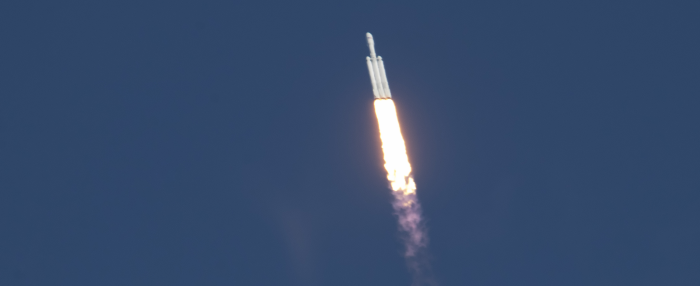
Rocket launches perfectly exemplify humanity’s triumphant ascent toward the stars. These modern marvels have propelled us into a new era of cosmic discovery, where the universe’s boundaries seem to stretch ever further than we could even imagine a few decades ago.
There’s nobody spearheading space exploration quite like SpaceX. A few months ago, their Falcon 9 launch was so powerful that it blew a hole in the Ionosphere roughly 500 miles wide. This layer of the atmosphere is charged with ions, which emit shimmering red and green hues during the aurora as they interact with solar wind and radiation from solar flares. Like a data highway, the Ionosphere also plays a crucial role in reflecting and refracting radio signals, enabling communication here on Earth and in the sky.
SpaceX isn’t the only entity perforating the ionosphere, though. On September 14th, the U.S. Space Force launched the Victus Nox mission aboard a Firefly Alpha rocket from Vandenberg Space Force Base. This mission, executed with a breathtaking 27-hour notice, is set to learn more about the ionosphere to help protect it and explore its potential benefits for scientific and technological advancement.
The Victus Nox launch, while awe-inspiring, left a visible mark on our atmosphere, piercing the ionosphere and leaving spectacular visual phenomena, like the red glow observed during the launch— much like the one the Falcon 9 left behind. While captivating, it is said that these interactions pose no threat to terrestrial life and are part of the dynamic nature of our cosmos exploration.
The exhaust fumes from rocket launches, made mostly of water and carbon dioxide, can interact with the ions in the ionosphere, much like a chemical reaction. That said, this interaction can temporarily carve a hole through the ionosphere, which can disrupt our communications systems, leading to anomalies in ham radio transmissions and GPS errors. The good news is that the ionosphere settles down and recovers fairly quickly.
The Falcon 9 has taken flight 217 times since 2010, with 61 awe-inspiring launches in the year 2022 alone. It’s the workhorse of our current global space fleet, and it’s easy to see why. With a mixture of liquid oxygen and kerosene fuel, it soars into the heavens, carrying payloads including coffee and cannabis that open new chapters in our cosmic journey.
However, there are bigger problems with rocket launches than their effect on the ionosphere. As these rockets pierce the veil of Earth’s atmosphere, they leave behind a footprint of their own—a dark soot created by the burning kerosene. This soot is injected directly into the Stratosphere, that layer of the atmosphere ranging from 4-12 miles above the Earth’s surface.
As the soot lingers in the Stratosphere for up to five years, it absorbs heat, contributing to climate change and damaging the ozone layer. Many scientists believe that rocket launches just aren’t good for the environment right now, though “studies” suggest that pollution from these launches is minimal.
The aviation industry, for instance, burns 100 times more fuel each year than all the rockets combined. Yet, there’s a crucial difference—airplanes traverse the troposphere, a region where soot precipitates quickly, whereas rocket soot lingers in the stratosphere for years.
This lingering soot has a ripple effect that extends beyond the skies. It warms our planet, damages the ozone layer, and alters temperatures, slowing subtropical jet streams and affecting summer monsoons in Africa and India. While the ionosphere is getting a lot of attention, these launches, which grow more and more frequent each year, may be causing a lot more harm than we think to the stratosphere, which contains our delicate ozone layer and protects us from solar radiation.
That’s not to take away from all of the incredible things happening out in space, like the James Webb Space Telescope showing us the furthest reaches of the cosmos and, of course, SpaceX‘s mission to develop reusable vehicles that could one day carry humans to Mars.
SpaceX’s pioneering spirit has reduced the cost of space travel, making rocket launches more frequent as well as reusable. However, as we navigate the space, it’s important to remember that we’re just explorers. Our responsibility is to protect our planet— allowing it to continue fostering the life needed to expand our reaches throughout the universe.
Meteors and Asteroids
Meteoroids, meteors, and meteorites are like voyagers that enter Earth’s atmosphere. They streak through the heavens at incredibly fast speeds, leaving fiery trails that light up the night sky. Sometimes, these celestial interlopers blaze even brighter than Venus, earning them the title of “fireballs.”
Each day, a staggering 48.5 tons of meteoritic material rains down on our planet. But what happens when they reach Earth’s doorstep?
As meteoroids, which hang out in space, hurtle into Earth’s atmosphere, they transform into meteors—marked by a brilliant, fiery display. Meteors travel extremely fast and often break apart in the atmosphere. These cosmic fireworks, known as meteor showers, light up the night sky and captivate onlookers below. You can watch them all over the world throughout the year.
However, meteoroids can also survive the journey through the atmosphere and come to Earth. When it manages to brave the Earth’s atmosphere and touch down, it earns the title of “meteorite.”
Most meteorites, typically ranging from the size of a pebble to a fist, resemble Earthly rocks, but they bear a telltale sign of their cosmic voyage—a shiny, burned exterior known as the “fusion crust.” This outer layer forms as the meteorite’s surface melts during its fiery passage through the atmosphere.
More than 50,000 meteorites have been found on Earth, and a staggering 99.8 percent hail from asteroids. But even though they’re small, big ones have penetrated our atmosphere in catastrophic fashion.
History bears witness to the devastation that can be wrought by celestial collisions, like the Chicxulub Crater, a scar on the Yucatan Peninsula. Upon impact, the immense energy released created a towering plume of superheated gasses and debris that surged into the upper atmosphere. This colossal cloud led to the widespread ignition of wildfires, producing immense amounts of smoke and soot.
The suspended particles in the atmosphere blocked sunlight for an extended period, causing a dramatic cooling of the Earth’s surface—a phenomenon known as “impact winter.” This disruption in climate patterns had devastating consequences, contributing to the mass extinction event that devastated approximately 75 percent of all life on Earth, including the dinosaurs.
Throughout history, there have been tales of meteorite-caused injury and destruction. From the 1954 incident that severely bruised Ann Hodges of Sylacauga, Alabama in her home, to the Tunguska event of 1908, where a meteoroid exploded in the skies of Siberia.
While they’re usually tiny by the time they make it to the ground, stranger things have happened, as meteorites have the potential to be massively destructive. In 2013, the world was once again startled by a brilliant fireball that streaked across the Russian sky—the Chelyabinsk Event. It exploded in the air, unleashing a force equivalent to 440,000 tons of TNT. The shockwave shattered windows and damaged buildings below.
If a colossal meteorite or asteroid were to make a cataclysmic impact on Earth, the atmospheric consequences would be nothing short of apocalyptic. The force of such an impact would send shockwaves through the atmosphere, unleashing a searing firestorm and ejecting colossal amounts of debris into the skies. The resulting atmospheric upheaval would trigger a dramatic drop in temperatures, much like a nuclear or impact winter, disrupting weather patterns, causing catastrophic wildfires, and choking the skies with dust and soot.
Earth has faced its share of cataclysms, including massive asteroid impacts, and the scars they leave are enduring reminders of the fragility of life on our planet. The good news is scientists are keeping a close watch on asteroids, and the risk of impact is low.
Peering into the Unknown: Sci-Fi Theories

While the cosmos beckons us with its wonders and mysteries, there are theoretical scenarios that occasionally stir up feelings of unrest among the stargazers. These speculative fears, while captivating, should be approached with a measured curiosity since they’re found in the realms where science meets science fiction.
Raegan’s Star Wars Defense Plan
During the Cold War, President Ronald Reagan’s ambitious “Star Wars” defense plan once existed. This strategic initiative aimed to develop a space-based missile defense system capable of intercepting and neutralizing incoming nuclear missiles. In theory, this could have involved missile strikes from space platforms.
Theoretical missile strikes from space could, in principle, pose a threat to Earth’s atmosphere. The detonation of powerful explosives in the upper atmosphere could release massive amounts of energy, potentially altering atmospheric chemistry and generating shockwaves with unknown consequences.
The consequences of such missile strikes could range from creating temporary atmospheric disturbances like localized “cosmic storms,” to more dramatic scenarios involving atmospheric ionization or electromagnetic interference.
Reagan’s “Star Wars” defense plan was ultimately shelved, though. The vast challenges of implementing such a system, including the logistics, technology, potential threats, and international cooperation required, have kept it firmly in the realm of the speculative, at least to the public. Still, it’s pretty cool to think about whether or not we’ll employ something like it should an asteroid wander into our backyard.

Starlink Satellites: Cosmic Debris or Shooting at Stars?
The Starlink satellite constellation, initiated by SpaceX, is making it possible to access the internet quickly in remote places. As an added bonus, you can track their silent, ethereal silhouettes across the night sky.
However, any time we launch something into space, there are concerns. Recently, the FAA raised concerns about the potential hazards of these artificial satellites during their reentry into Earth’s atmosphere. Some speculated that upon their return, these satellites could descend at remarkable speeds, similar to meteoroids, posing threats to both aircraft and human lives.
However, SpaceX has confirmed that they’ve already decommissioned several satellites, ensuring their complete burn-up upon reentry into Earth’s atmosphere. While speculative fears persist, the technology and safety measures in place offer some reassurance.
In a few billion years, the Sun will exhaust its nuclear fuel and transform dramatically into a red giant. As the Sun swells into a red giant, it will likely engulf the inner planets, including Earth. This cataclysmic event will result in the complete obliteration of our atmosphere as the Sun’s outer layers expand and scorch everything in their path.
The Sun’s transformation into a red giant often serves as the backdrop for tales of interstellar migration, advanced technology, and the survival of humanity in the face of a changing cosmos. While it’s true that our Sun will die, the good news is we have a few billion years to get ready, and the possibilities for humanity before then are endless.
The HAARP Array
The High-frequency Active Auroral Research Program (HAARP) facility in Gakona, Alaska, has been the subject of both scientific research and speculation due to its ability to actively manipulate the ionosphere and upper atmosphere.
HAARP is used for various scientific investigations, including radio science, space weather research, and studies related to our magnetosphere. The array possesses a powerful Ionospheric Research Instrument (IRI) consisting of 180 high-frequency tower antennas. These antennas can radiate 3.6 MW of power into the upper atmosphere and ionosphere.
Researchers use HAARP to create controlled disturbances in the ionosphere to understand its behavior and its effects on long-distance communication, navigation, and radar systems that rely on radio propagation through the ionosphere.
Using these antennas, HAARP causes a slurry of phenomena in the atmosphere, such as creating plasma structures and irregularities like the “bubbles” caused by heat, which can scatter high-frequency signals. More or less, they’re being tested to create sustainable plasma clouds and bubbles below the ionosphere, which they can use to reflect high-frequency radar and other communications signals.
Sci-fi fanatics, who may be afraid of 5G and other network antennas, believe that HAARP might be used to control weather patterns or even our minds, but these claims are not supported by credible scientific evidence and have been debunked by experts. In fact, these experiments have yielded valuable insights into the behavior of the ionosphere and its potential applications, like reducing high-energy electrons in the radiation belts to protect satellites.
While it is true that HAARP can induce certain phenomena in the ionosphere, it’s important to remember that the ions in the ionosphere are easily agitated and revert back to their normal state quickly. The experiments at HAARP are controlled and conducted to help us gain a better understanding of the ionosphere and space weather. There is no proof of a mind control device or something that can cause irreparable damage to our atmosphere.
Wormholes and Theoretical Physics
Wormholes are theoretical structures that emerge from the equations of Einstein’s theory of relativity. These tunnels, if they exist, could offer shortcuts through space-time, connecting distant cosmic regions. They remain purely theoretical, with no empirical evidence to support their existence.
Theoretically, if a wormhole were to open near Earth, it could create a conduit between our atmosphere and the unknown realms of the cosmos. Would it be able to transport our entire planet, or would it spaghettify it as a black hole might?
Science fiction revels in the possibilities offered by wormholes. Imaginative narratives explore scenarios where these cosmic gateways disrupt Earth’s atmospheric equilibrium, leading to cosmic intrusions, alternate dimensions, or even interstellar contact. But for now, we can’t prove that wormholes exist, and there’s virtually no evidence to suggest that they’d be a problem for Earth if they did.
Cosmic Ray Bombardment
High-energy cosmic rays from distant galaxies continuously bombard Earth’s atmosphere, creating particle showers as they interact with atmospheric particles. While this phenomenon is a daily occurrence, a lot of science fiction fans speculate what would happen if we experienced a major influx of cosmic rays.
Ordinary people might hypothesize that being bombarded by a massive amount of cosmic rays could temporarily weaken Earth’s atmosphere, disrupting our ability to communicate on the ground and in the sky. This could result in unpredictable atmospheric phenomena, altering the cosmic equilibrium that sustains life on our planet.
However, the precise effects of cosmic ray surges remain uncertain, and the resilience of Earth’s atmosphere has weathered cosmic storms for eons. More importantly, the general consensus in the scientific community is that it’s actually nothing to worry about.
Solar Rays
The Sun occasionally unleashes colossal solar flares—intense bursts of radiation that temporarily disturb Earth’s atmosphere. While these solar storms can disrupt communication systems and navigation, they do not typically create physical holes in the atmosphere.
Theoretical scenarios could envision colossal solar flares capable of breaching the atmospheric boundaries, causing temporary disruptions in Earth’s electromagnetic environment and, in turn, affecting communication systems, navigation, and climate patterns.
However, evidence suggests that solar flares have little effect on Earth. As long as our atmosphere is strong enough to protect us from cosmic radiation, we’ll be alright. Science fiction stories love the idea of a massive solar flare wiping us out, but it seems like fantasy for now. We just have to keep an eye on the Ozone Hole, considering it protects us from solar radiation.
Black Holes
Black holes have captured our imaginations and fueled our anxieties for years. If we were ever to approach a black hole, the immense gravitational forces at play would stretch, distort, and compress our planet’s atmosphere in unimaginable ways.
The atmosphere would experience extreme turbulence, temperature variations, and gravitational stresses before even approaching the black hole. If the planet were to enter it, the theory is that it would be spaghettified and then be compressed into a singularity.
The good news is that the closest one is 1,600 light years away, which is about nine quadrillion miles away from Earth— so they’re nothing to worry about. Every article will say something like “merely” or “just” 1600 light years— but it’s still an unfathomable distance.
The Death of the Sun
In a few billion years, the Sun will exhaust its nuclear fuel and transform dramatically into a red giant. As the Sun swells into a red giant, it will likely engulf the inner planets, including Earth. This cataclysmic event will result in the complete obliteration of our atmosphere as the Sun’s outer layers expand and scorch everything in their path.
The Sun’s transformation into a red giant often serves as the backdrop for tales of interstellar migration, advanced technology, and the survival of humanity in the face of a changing cosmos. While it’s true that our Sun will die, the good news is we have a few billion years to get ready, and the possibilities for humanity before then are endless.
Final Thoughts
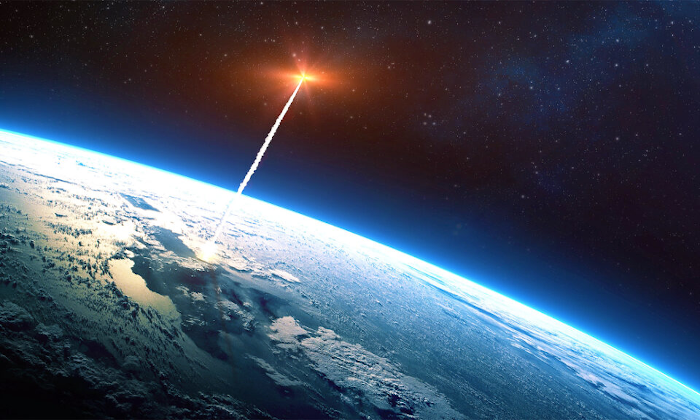
As we journey through the cosmos and peer into the unknown, let’s remember that while some of these scenarios may spark anxiety, they also ignite our collective curiosity and imagination. The universe is filled with wonders that encourage us to explore, understand, and protect our precious planet and its atmosphere.
From the triumph of healing the Ozone Hole a bit to the promise of responsible space exploration, we find hope and inspiration in our capacity to protect our world. The challenges that loom on the horizon remind us that we are stewards of a fragile blue oasis in the vast cosmic sea.
Our actions today will shape the future of our planet, ensuring that it remains a cradle for life, wonder, and endless exploration. So embrace the mysteries of the universe with open hearts, daring spirits, and an unwavering commitment to safeguarding the atmosphere that sustains us all.



